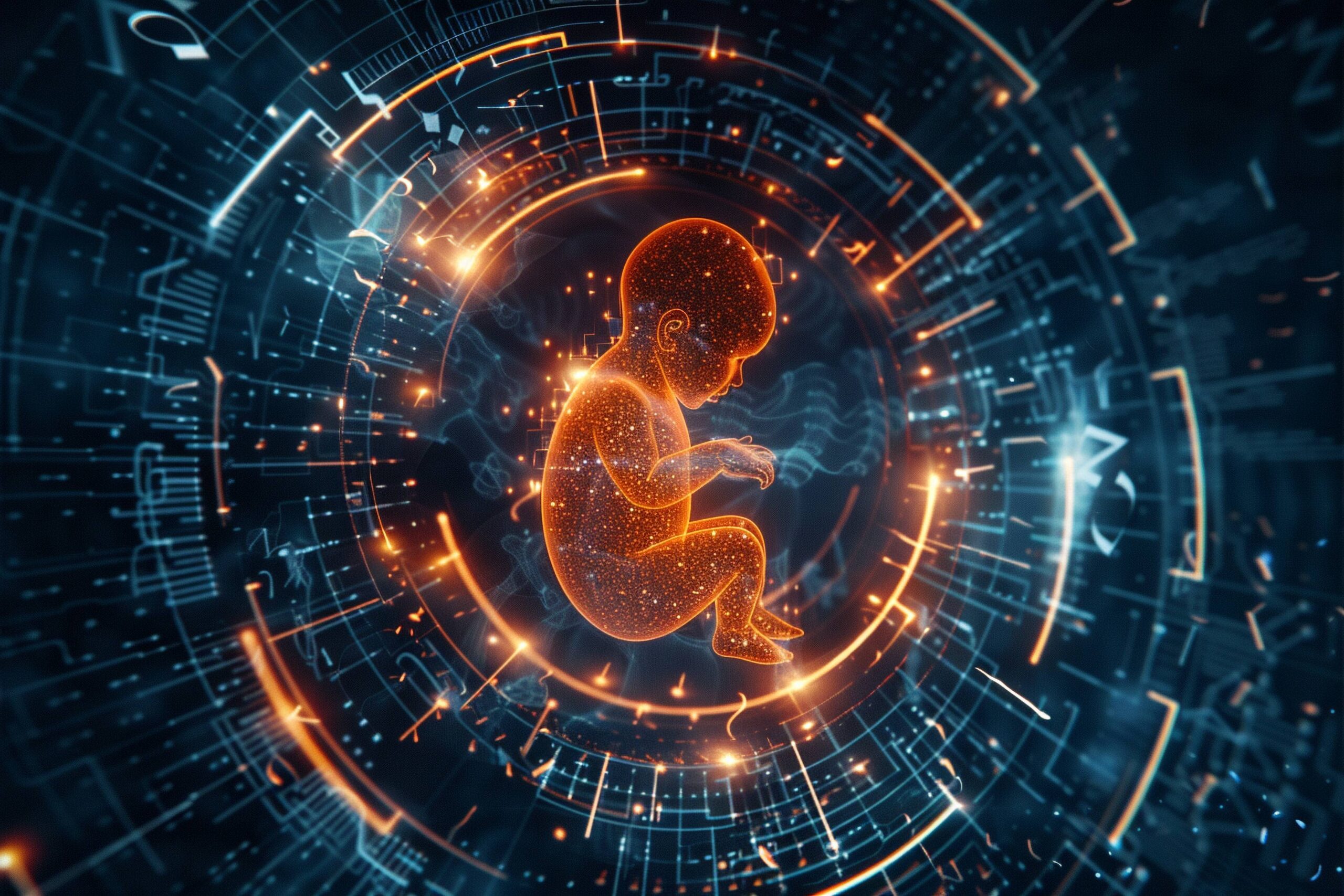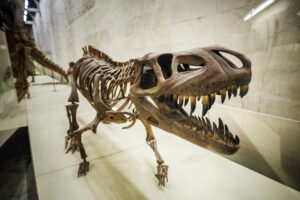“Introducing EctoLife – the world’s first artificial womb“
These are the opening words of the short video that caused a worldwide sensation in December 2022. It introduces a futuristic-looking company that claims to be able to give birth to children in an “artificial womb”.
Powered entirely by renewable energy, the system could “produce” up to 30,000 children per year, fulfilling the long-held desire of couples with medical problems to have children.
The growth of the child in the artificial womb can be followed via an app, and an elite package offers the possibility of genetically modifying the child.
The video quickly spread like wildfire across all social media platforms and some people actually believed the video was real.
It took a while to realize that “EctoLife” does not really exist, but is a vision of the future by Berlin-based science communicator and filmmaker Hashem-Al-Ghaili.
So far, it’s just a vision, but that doesn’t mean the concept can’t be realized. Andrew Shennan, a professor of obstetrics at King’s College London, and Joyce Harper, a professor of reproductive sciences at the Institute of Women’s Health at University College London, told HuffPost that the current state of science would theoretically make this concept possible, but that there are still many technical problems for which there are no concrete solutions.
The current state of research is the development of an improved version of the incubator, which should increase and secure the chances of survival of the fetus in cases of extreme prematurity. Scientists at the Eindhoven University of Technology in the Netherlands are working intensively on this project, which is supported by the EU with almost 3 million euros. The prototype of the Incubator 2.0 is expected to be ready by 2030. According to Guid Oei, head of the Department of Perinatology at Eindhoven University of Technology, no prototype for complete ectogenesis is being researched anywhere in the world and is “pure science fiction”.
The concept of the “artificial womb” is not new. The inventor of this term, J.B.S. Haldane (theoretical biologist and geneticist, 1892-1964), predicted at the beginning of the 20th century that by 2074 less than 30% of children would be born to women, but it seems that science cannot fulfill his expectations.
However, it does not only depend on the scientific readiness, but also on the political level to decide to what extent this concept, and in particular the “elite” project, corresponds to the ethical and moral values of our society.
Hopefully, the opinion of Judaism, as one of the founders and pillars of ethics, will also be taken into account. And this brings us to the question: What is Judaism’s position on artificial pregnancy and birth?
In general, there are opinions among halachic authorities (including Rabbi Eliezer Waldenberg and Rabbi Moshe Sternbuch) that IVF (in vitro fertilization) is very problematic. Others (including Rabbi Schlomo Zalman Auerbach and Rabbi Yosef Schalom Elyashiv) permitted IVF (under certain circumstances) but were hesitant about surrogacy. However, there were also prominent rabbis, including Rabbi Ovadia Yosef, who were in favor of surrogacy.
The problem with surrogacy is determining the halachic mother of the child.
There are three factors that can determine maternity: The owner of the ovum, the place of fertilization, and the person who gave birth to the child.
Until recently, all three factors were always combined into the “natural mother,” so nowhere in the Mishnah and Talmud, nor in the writings of the Rishonim (medieval scholars) and the Acharonim (modern scholars), is it explicitly written which factor determines the “halachic mother.
The contemporary rabbis who dealt with this question tried to draw parallels between this case and the cases in the Talmud, and were often guided by their halachic instincts.
Rabbi Ovadia Yosef and Rabbi Avigdor Nebenzahl hold that the owner of the ovum is the halachic mother. Rabbi Eliezer Waldenberg and Rabbi Zalman Nechemia Goldberg, on the other hand, held that it is the woman who gives birth.
However, there were also rabbis, including Rabbi Shlomo Zalman Auerbach and Rabbi Yosef Shalom Elyashiv, who did not make a clear decision on this issue and, in case of doubt, considered both (the owner of the ovum and the woman giving birth) to be the halachic mother. This decision seems to have been adopted by most Beit Din (Jewish courts). In practice, this means that a child born to a non-Jewish surrogate mother requires a giur lechumra (giur of doubt), even though the ovum came from a Jewish woman.
Back to EctoLife: “From a purely halachic point of view, EctoLife would make it much easier for us to determine the halachic mother regarding the surrogate mother discussion, because it would eliminate the possibility of the woman giving birth, and only the owner of the egg would remain as a factor,” says Rabbi Yosef Zvi Rimon, Rosh Yeshiva of the Jerusalem College of Technology (JCT) and Chief Rabbi of Gush Etzion. “Before that, the halachic authorities would still have to decide whether this concept does not fall under the prohibition of kilaim (mixing of species) as explained in the Ramban (Vaikra chapter 19, verse 19).” According to Nachmanides, it is forbidden to alter the reproductive process of nature by the hand of man, because this shows that one must go to the hand of G-d.“
“In any case, I think we would only use EctoLife or a similar concept in exceptional cases (instead of surrogacy), but it would not be in line with Jewish hashkafa (worldview) to replace natural pregnancy and birth, which are very important from a Kabbalistic (and also medical) point of view, with a machine,” he says.
“I am not sure if the angel who teaches the entire Torah to the child in the womb (see Tractate Niddah 30b) would also come into the artificial capsule,” Rabbi Rimon adds jokingly.
.




